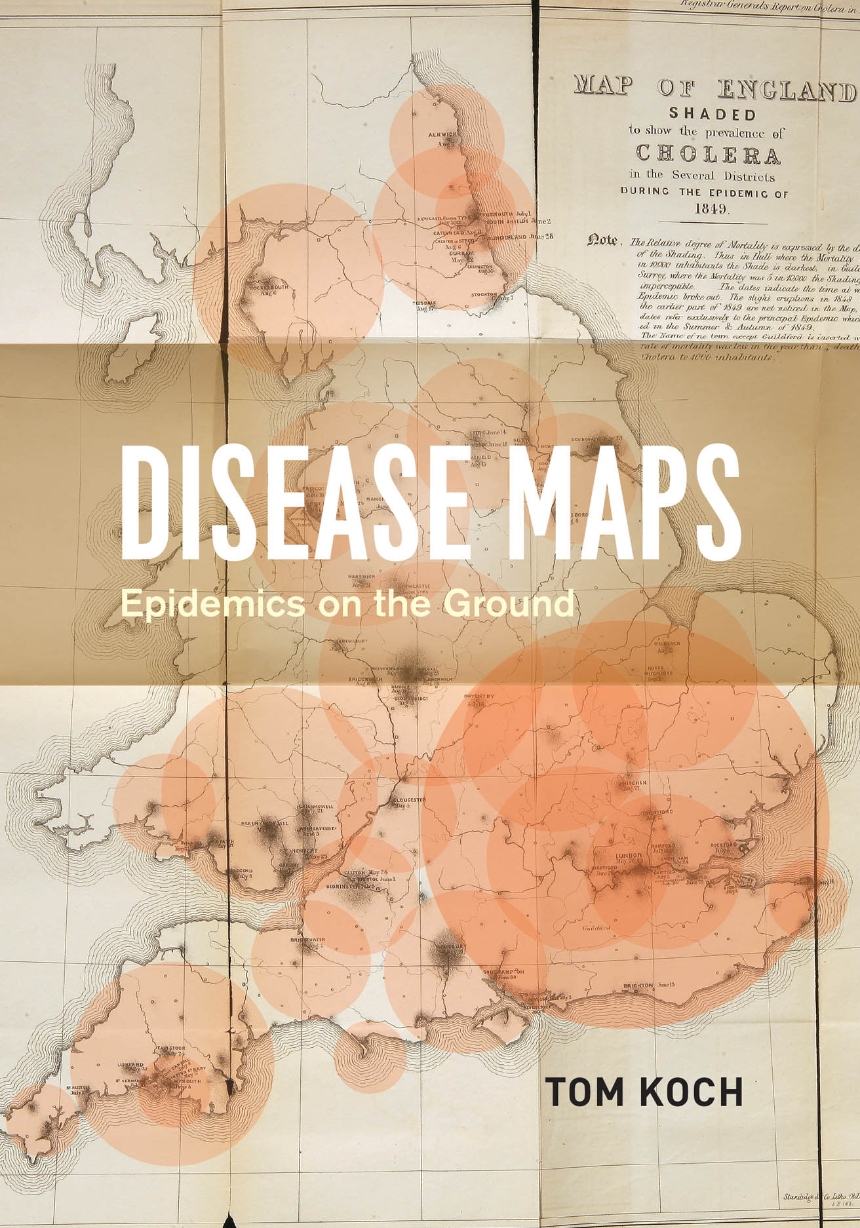Disease Maps
Epidemics on the Ground
In the seventeenth century, a map of the plague suggested a radical idea—that the disease was carried and spread by humans. In the nineteenth century, maps of cholera cases were used to prove its waterborne nature. More recently, maps charting the swine flu pandemic caused worldwide panic and sent shockwaves through the medical community. In Disease Maps, Tom Koch contends that to understand epidemics and their history we need to think about maps of varying scale, from the individual body to shared symptoms evidenced across cities, nations, and the world.
Disease Maps begins with a brief review of epidemic mapping today and a detailed example of its power. Koch then traces the early history of medical cartography, including pandemics such as European plague and yellow fever, and the advancements in anatomy, printing, and world atlases that paved the way for their mapping. Moving on to the scourge of the nineteenth century—cholera—Koch considers the many choleras argued into existence by the maps of the day, including a new perspective on John Snow’s science and legacy. Finally, Koch addresses contemporary outbreaks such as AIDS, cancer, and H1N1, and reaches into the future, toward the coming epidemics. Ultimately, Disease Maps redefines conventional medical history with new surgical precision, revealing that only in maps do patterns emerge that allow disease theories to be proposed, hypotheses tested, and treatments advanced.
344 pages | 106 color plates, 35 halftones, 6 line drawings, 2 tables | 6 x 9 | © 2011
Geography: Cartography, Geography--Reference
History: General History
Reviews
Table of Contents
List of Illustrations
Part I. The Idea That Is Disease
Chapter 1. Moving Forward: Cartographies of Disease
Chapter 2. Mapping Symptoms, Making Disease
Chapter 3. Body and World: The Sixteenth Century
Chapter 4. Diseases in Cities: The Neighborhoods of Plague
Chapter 5. The Yellow Fever Thing
Part II. Cholera: The Exemplar
Chapter 6. “Asiatic Cholera”: India and Then the World
Chapter 7. Bureaucratic Cholera
Chapter 8. John Snow’s Cholera
Chapter 9. South London Choleras: William Farr, John Snow, and John Simon
Chapter 10. Choleric Broad Street: The Neighborhood Disease
Chapter 11. Cholera, the Exemplar
Part III. The Legacy and Its Future
Chapter 12. Cancer as Cholera
Afterword
Acknowledgments
Notes on the Illustrations
Illustration Credits
Notes
Works Cited and Consulted
Index